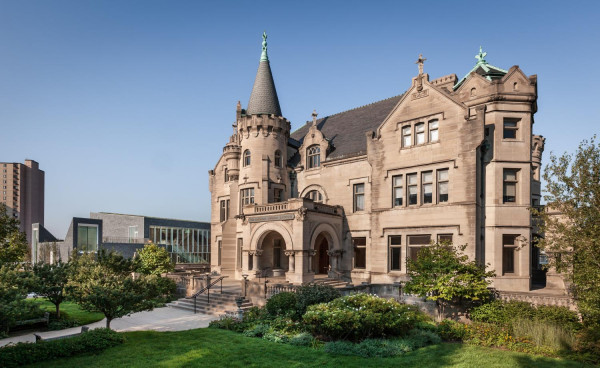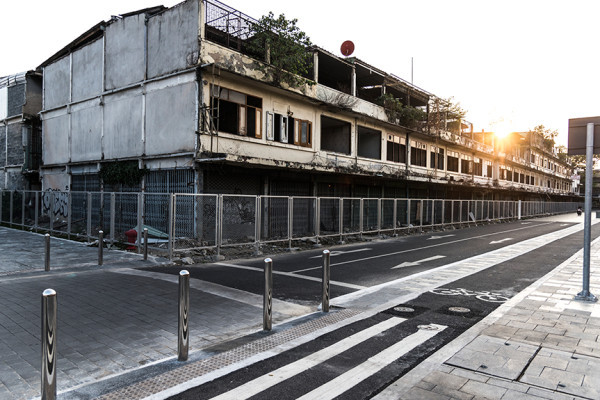Houses Built on Trash - A Glimpse into Urban Evolution
From trash to treasure, here are seven ways to think of trash in a whole new light
August 28, 2023

Historically, as cities expanded and populations surged, the boundaries of space were tested. The result? You may have guessed it - Houses needed to be built on top of trash heaps, layers of discarded materials, and remnants of everyday life. In the midst of communities expanding and new developments being built on old landfills once occupying space on the outskirts of town, people usually carry on with their day not thinking twice about it. Yet, what if we told you that these moments may very likely become a part of history's blueprints? In this blog, we're diving deep into the history of urban evolution, and shedding light on why society's trash today may become the ultimate treasure of tomorrow. We're uncovering how homes and entire communities have risen from unforeseen circumstances, showcasing the silver lining of every trash pile. In a nutshell, here are seven different ways you can look at trash in a whole new way to better understand its past, present, and future significance.
The Archeology of Cities
You know that saying, one man's trash is another person's treasure? Well, what better way to literally and figuratively appreciate this than by looking at the archeology of cities? The layers beneath modern cityscapes are archives of human habitation. Archaeological excavations often unveil stratified evidence of civilizations past, where each layer represents a different era, revealing stories of how communities thrived, adapted, and sometimes simply disposed of their waste. Throughout the centuries, as houses sprouted from the remnants of waste, they also carried a piece of history within their walls. These dwellings serve as a reminder of the city's evolution, showcasing the transition from waste-strewn outskirts to thriving neighborhoods. The juxtaposition of the old and the new in these houses tells a story of transformation and resilience.
Medieval Mounds
Amidst the expanse of the medieval period, burgeoning cities found themselves grappling with the intricate issue of waste disposal within their constrained walls. The consequence of this challenge was the birth of trash mounds, often referred to as "middens," quietly accumulating at the city's periphery. However, what evolved from this logistical predicament was nothing short of remarkable. These mounds, initially born out of necessity, gradually transformed into the very foundations that supported new structures, imprinting history in layers both captivating and distinctive.
The Urban Landscape of Early Modern Cities
In the wake of the Renaissance and the era that followed, the urban expanse underwent a transformation of unparalleled proportions. As cities stretched their limits, the once abundant open spaces dwindled into scarcity. Along the fringes, a scene emerged—a landscape adorned with heaps of discarded debris and rubble. Ingeniously, these seemingly haphazard accumulations evolved into elevated platforms, serving as the very foundations upon which new structures took form. This innovative reimagining of waste materials stands as a testament to human resourcefulness when in the midst of pressing necessity for more urban space.
Colonial America: Houses Amidst Discards
During the colonial era in America, as settlements flourished, the concept of formal waste disposal systems remained in its infancy. With the gradual expansion of these communities, the remnants of daily life found their way to gather around homesteads. These areas, colloquially known as "back lots," held an amalgamation of discarded materials. This accumulation of debris served a dual purpose, offering elevated terrain for future construction ventures while shedding light on a pragmatic perspective toward optimizing spatial resources.
Industrialization and Vertical Expansion
The onset of the Industrial Revolution brought massive urban growth. Amidst this surge, the accumulation of industrial waste and construction detritus became an undeniable reality. Yet, amidst the remnants of progress, a unique trend emerged—an inclination for innovation. Visionary individuals saw beyond the heaps of discarded materials and seized the opportunity to erect new structures atop these mounds. As cities reached skyward, these elevated landscapes seamlessly wove themselves into the new concept of urban life, becoming indispensable components of a rapidly changing world.
The Modern Lens: Lessons from the Past
While today's waste management systems are far more sophisticated, traces of this historical practice can still be found in the form of old dumps, landfills, and abandoned lots. Reflecting on this past offers insights into how cities have adapted to challenges over time and how urban development remains a dynamic interplay between people, space, and waste. Exploring bygone eras provides more than a glimpse into history—it unveils a treasury of wisdom for the present. The relics of the past serve as tangible lessons on the evolution of cities, spotlighting the strategies employed to overcome obstacles across every decade.
Sustainability and Innovation
As urbanization continues, there's a renewed focus on sustainable practices and waste reduction. Learning from history, urban planners and architects are exploring ways to incorporate waste-reducing strategies into contemporary design, ensuring that lessons from the past inform the future of cities. Just think - a future where cities stand as monuments to both progress and preservation; how cool is that?!
Houses built on trash heaps are more than just architectural oddities; they're testaments to human resilience, adaptability, and the remarkable ways in which cities evolve. These stories reveal a deep connection between the past and present, reminding us that the urban landscape is an ever-changing canvas shaped by the challenges and creativity of generations before us. So the next time you're taking out your trash, take a moment to guess where and how it might be used down the line.

Marvelous Minnesota mansions: Unlock the doors to 10 extraordinary historic homes you can tour!
Step into Minnesota's past as you explore its remarkable historic homes, providing a fascinating glimpse into the lives of influential figures, the architectural magnificence of bygone eras, and the cultural heritage of the region.

What is a property title?
Property Titles: Your Guide to Understanding Ownership and Rights

Everything You Need to Know About Repurposing Abandoned Properties
Repurposing buildings is an art that allows us to breathe new life into old structures. Reusing vacant properties simultaneously discovers new opportunities to integrate our rich historic culture.

The Iconic Father of the Bride House and Its Real History
The 1991 movie Father of the Bride is known for many things, but none stand out more than the Banks' house. Come with us to explore the real life history of the home!